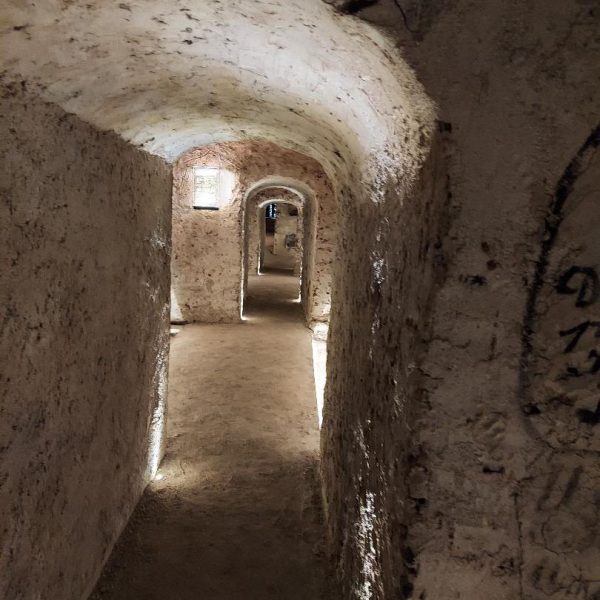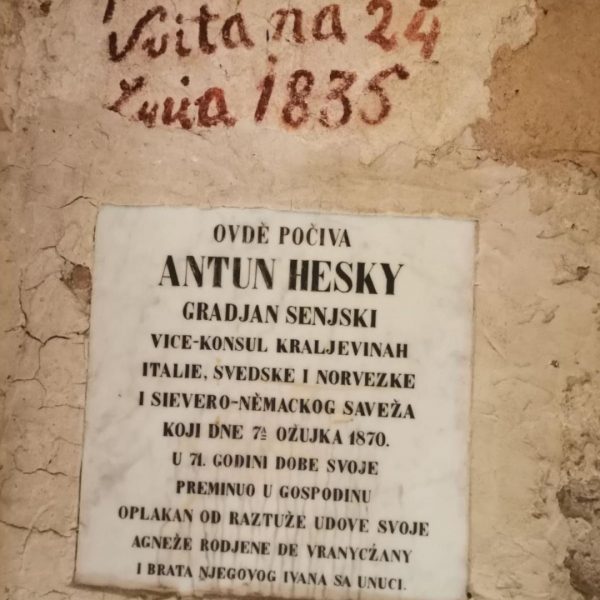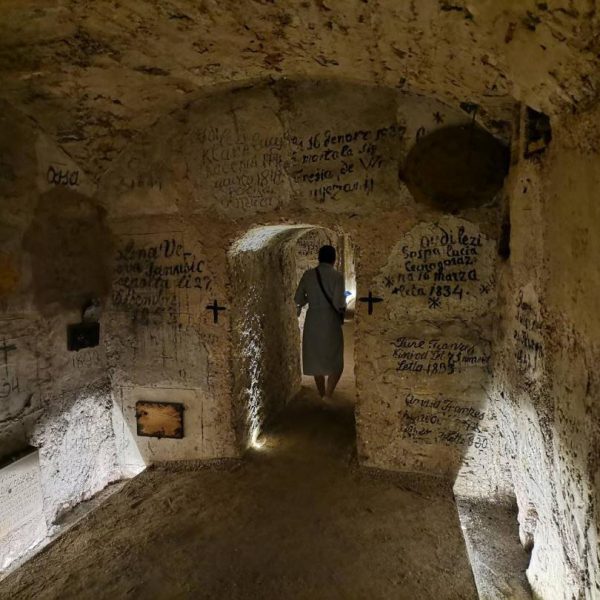The secrets of Senj’s catacombs – the last resting place of many Senj citizens and dignitaries – are held under the town square.
If you visit the town of Senj and open the gates of the town of the dead under Cimiter Square, you step into the mystical atmosphere of Senj’s history that hides many secrets.
The city of Senj and its features is known to the cultural world for its history and rich cultural heritage. Particularly interesting stories are told by the Senj Cathedral (the first on its site dates back to the 4th century), the town square (Cimiter) which houses the pagan shrine of Magna Mater, and below the square lie the Senj catacombs, which still hide many secrets.
Crypts are underground rooms under the church floor, usually, under the main altar in Christian basilicas (episcopal churches). These are the rooms under the sanctuary floor, where there was a sarcophagus with relics of martyrs. Below the sanctuary of the Senj Cathedral is a crypt in which several Senj bishops (Pohmajević, Ožegović, Maurović) and several canons of the Senj Chapter are buried, so it is also known as the Kaptol Crypt.
Catacombs are old underground cemeteries where Christians were buried and hid during the greatest persecutions. Since the original catacombs were created for the purpose of secret burial, it was common to write a secret sign – cryptogram – on the tombstones, which was readable only by worshipers of the new faith. The most common symbols of early Christianity are variations of Christ’s monograms, fish, ship, alpha, and omega, Solomon’s knot, oil lamp, dove, lily, palm tree.
The catacombs of Senj are located below the right nave of the Senj Cathedral and to a lesser extent below the Cimiter Square, which has historically served as the city cemetery. In the middle of the 18th century, during the time of Bishop Benzoni of Senj (1730-1745), the right-hand side nave-ship was added to the Senj Cathedral. The area of the western part of Cimiter Square, which was the city cemetery at the time, was used to expand the church. The first preserved data on the cemetery on Senj’s Cimeter Square can be found in the Statute of the Senj Chapter from 1340.
Cemeteries are arranged spaces for the care of the remains of the inhabitants of towns, settlements and villages. These are cult places, also known as the last resting places, God’s field, necropolis – the city of the dead. Thus, under the new nave, a long corridor was built with four expanded chambers, on the sides of which grave niches were built for the burials. Although they have no direct connection with the early Christian catacombs, they are so named in the Senj community because their architecture, appearance, atmosphere, and mysticism undoubtedly associated them with this early Christian model of the cemetery. The first registered burial is confirmed by a document from 1737, which mentions that the tomb of Tomica Dujmović is located under the right ship.
Numerous citizens and dignitaries of Senj are buried in the catacombs of Senj, and details of their lives can be gleaned by studying the inscriptions on the gravestones. Some of the names of the buried include: Ivan pl. Vranicani (Dobrinović), 1866; Antun Hesky, a citizen of Senj, vice-consul of the Kingdom of Italy, Sweden, and Norway and the North German Confederation; Josip Giurković, doctor of wisdom, lawyer, 1850; Katarina Domazetovich, Amalia Gjurković, born pl. Turkail, 1862; Magdalena de Wukasovich, 1835; Julie Thinelli von Loewenstern born von Lang Magistratis Gattin, 1848; Our Lady Captain Domazetovich, 1840.
Blaženka Ljubović studied archeology and history at the Faculty of Philosophy in Zadar and became a museum advisor in 2016. She is employed at the City Museum of Senj (www.muzej-senj.hr), where she acts as the director. You can contact her at: blazenkaljubovic@gmail.com.
To cite this article: Blaženka, Ljubović (2022) ‘Open the gates of the town of the dead’ in Interpret Europe Newsletter 1-2022, pg.23-24
Available online:https://interpret-europe.net/wp-content/uploads/2022/04/PDF-Newsletter-2022_1-spring_draft-5.pdf






